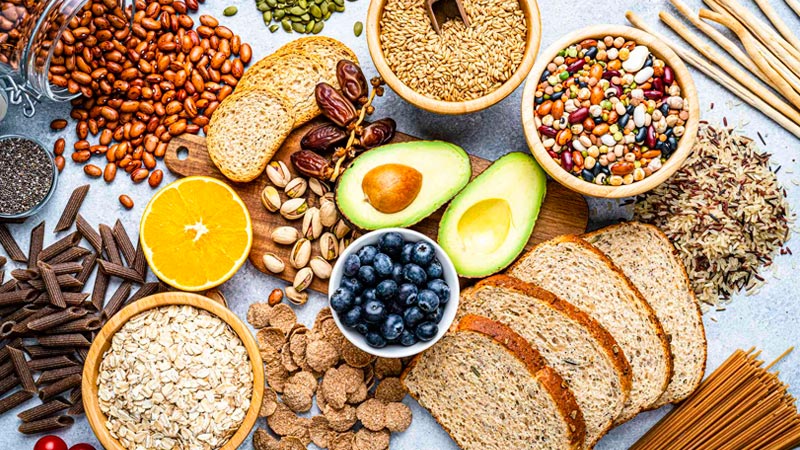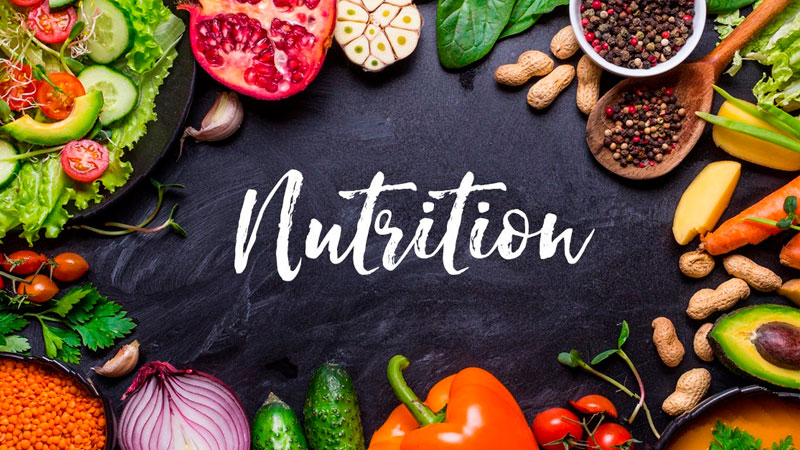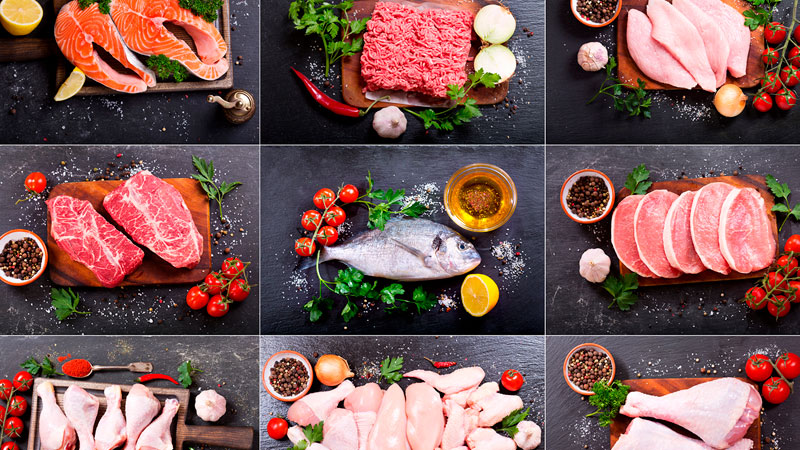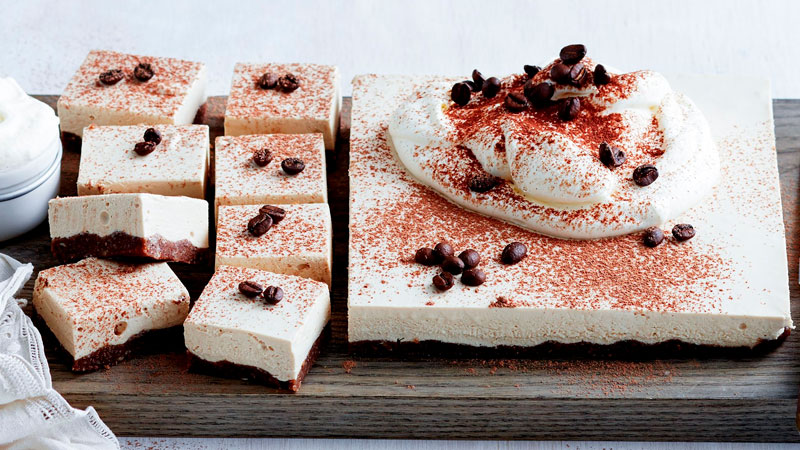A high-fiber diet is essential for maintaining good health and preventing chronic diseases such as diabetes, heart disease, and cancer. Fiber is a type of carbohydrate that the body cannot digest, but it plays a vital role in maintaining digestive health, regulating blood sugar levels, and reducing cholesterol levels.
Table of Contents
The recommended daily intake of fiber is 25-30 grams for adults, but most people fall short of this goal.
To help people increase their fiber intake, this article will provide a comprehensive list of the top 50 high-fiber foods. The list will include a variety of plant-based foods such as fruits, vegetables, legumes, whole grains, nuts, and seeds.
Each food item will be ranked by its fiber content per serving, and the article will also provide tips on how to incorporate these foods into a healthy diet. By following this guide, readers can make informed choices about the foods they eat and take steps to improve their overall health and well-being.
Understanding Fiber
Fiber is an essential nutrient that plays a crucial role in maintaining good health. It is a type of carbohydrate that your body cannot digest, making it an important part of a healthy diet.
There are two types of fiber: soluble and insoluble. Soluble fiber dissolves in water and forms a gel-like substance in your digestive system, which helps to slow down the absorption of glucose and lower cholesterol levels. Insoluble fiber, on the other hand, does not dissolve in water and helps to promote regular bowel movements.
Fiber is often associated with digestive health, but it also has many other health benefits. Eating a diet high in fiber can help to reduce the risk of heart disease, stroke, and diabetes. It can also help to promote weight loss by keeping you feeling full for longer periods of time.
Some of the top high fiber foods include fruits, vegetables, whole grains, nuts, and seeds. It is recommended that adults consume between 25-35 grams of fiber per day.
Here are some examples of high fiber foods:
- Apples: 4.4 grams of fiber per medium-sized apple
- Avocado: 10 grams of fiber per cup
- Black beans: 15 grams of fiber per cup
- Chia seeds: 11 grams of fiber per ounce
- Lentils: 15.6 grams of fiber per cup
- Quinoa: 5.2 grams of fiber per cup
- Raspberries: 8 grams of fiber per cup
Incorporating high fiber foods into your diet can be easy and delicious. Try adding some berries to your morning oatmeal, snacking on some raw veggies and hummus, or swapping out white bread for whole grain bread.
Benefits of High Fiber Foods
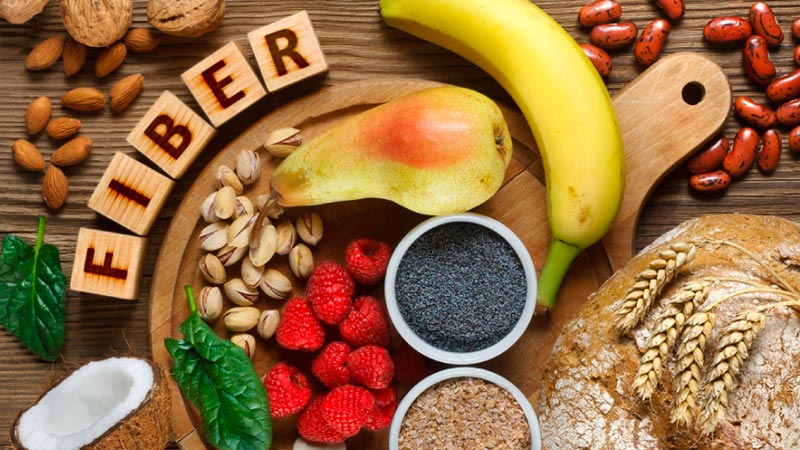
High fiber foods have a variety of benefits for the body, including:
-
Improved Digestion: Fiber helps to keep food moving through the digestive system and can prevent constipation. It can also help to regulate bowel movements and prevent diarrhea.
-
Lowered Cholesterol Levels: Soluble fiber can help to reduce the absorption of cholesterol into the bloodstream, which can help to lower overall cholesterol levels.
-
Reduced Risk of Heart Disease: A diet high in fiber has been linked to a reduced risk of heart disease. This may be due to the cholesterol-lowering effects of fiber, as well as its ability to improve blood sugar control.
-
Weight Management: High fiber foods can help to promote feelings of fullness and reduce overall calorie intake. This can help with weight management and may also help to prevent obesity.
-
Improved Blood Sugar Control: Fiber can slow down the absorption of sugar into the bloodstream, which can help to prevent spikes in blood sugar levels. This can be especially beneficial for individuals with diabetes.
Overall, incorporating high fiber foods into the diet can have a variety of health benefits and is an important part of a balanced and nutritious diet.
Top 10 High Fiber Fruits
When it comes to high fiber foods, fruits are an excellent source. They not only provide the body with essential nutrients but also help in maintaining a healthy digestive system. Here are the top 10 high fiber fruits that should be included in your diet.
Berries
Berries are a great source of fiber, and they come in a variety of flavors. They are low in calories and high in antioxidants, making them an excellent choice for a healthy snack. Some of the most popular berries that are high in fiber include strawberries, raspberries, and blackberries.
Pears
Pears are a great source of fiber, and they are also low in calories. They are a good choice for a snack or as part of a meal. Pears are also high in vitamin C, which helps to boost the immune system.
Avocados
Avocados are a unique fruit that is high in fiber and healthy fats. They are also a good source of potassium, which helps to regulate blood pressure. Avocados are a versatile fruit that can be used in a variety of dishes, from salads to smoothies.
Bananas
Bananas are a great source of fiber, and they are also rich in potassium. They are a great choice for a snack or as part of a meal. Bananas are also a good source of vitamin C, which helps to boost the immune system.
Oranges
Oranges are a good source of fiber, and they are also high in vitamin C. They are a great choice for a healthy snack or as part of a meal. Oranges are also low in calories, making them an excellent choice for those who are watching their weight.
Apples
Apples are a great source of fiber, and they are also low in calories. They are a good choice for a snack or as part of a meal. Apples are also high in vitamin C, which helps to boost the immune system.
Mangoes
Mangoes are a delicious fruit that is high in fiber. They are also a good source of vitamin C and vitamin A. Mangoes are a great choice for a healthy snack or as part of a meal.
Strawberries
Strawberries are a great source of fiber, and they are also low in calories. They are a good choice for a snack or as part of a meal. Strawberries are also high in vitamin C, which helps to boost the immune system.
Raspberries
Raspberries are a great source of fiber, and they are also low in calories. They are a good choice for a snack or as part of a meal. Raspberries are also high in vitamin C, which helps to boost the immune system.
Blackberries
Blackberries are a great source of fiber, and they are also low in calories. They are a good choice for a snack or as part of a meal. Blackberries are also high in vitamin C, which helps to boost the immune system.
Top 10 High Fiber Vegetables
Artichokes
Artichokes are a great source of fiber, with one medium-sized artichoke containing about 7 grams of fiber. They are also rich in antioxidants and contain a variety of vitamins and minerals, making them a healthy addition to any diet.
Peas
Peas are another vegetable that is high in fiber, with one cup of cooked peas containing about 9 grams of fiber. They are also a good source of protein and contain a variety of vitamins and minerals.
Okra
Okra is a popular vegetable in many parts of the world and is known for its high fiber content. One cup of cooked okra contains about 8 grams of fiber, as well as a variety of vitamins and minerals.
Acorn Squash
Acorn squash is a winter squash that is high in fiber, with one cup of cooked acorn squash containing about 9 grams of fiber. It is also a good source of vitamin C and potassium.
Brussels Sprouts
Brussels sprouts are a cruciferous vegetable that is high in fiber, with one cup of cooked Brussels sprouts containing about 6 grams of fiber. They are also a good source of vitamin C and vitamin K.
Turnips
Turnips are a root vegetable that is high in fiber, with one cup of cooked turnips containing about 4 grams of fiber. They are also a good source of vitamin C and potassium.
Sweet Corn
Sweet corn is a popular vegetable that is high in fiber, with one cup of cooked sweet corn containing about 4 grams of fiber. It is also a good source of vitamin C and thiamin.
Potatoes
Potatoes are a starchy vegetable that is high in fiber, with one medium-sized potato containing about 4 grams of fiber. They are also a good source of vitamin C and potassium.
Spinach
Spinach is a leafy green vegetable that is high in fiber, with one cup of cooked spinach containing about 4 grams of fiber. It is also a good source of vitamin A and vitamin C.
Carrots
Carrots are a root vegetable that is high in fiber, with one cup of cooked carrots containing about 4 grams of fiber. They are also a good source of vitamin A and potassium.
Top 10 High Fiber Legumes
Legumes, also known as pulses, are a great source of dietary fiber. They are rich in protein, vitamins, and minerals, making them a healthy addition to any diet. Here are the top 10 high fiber legumes:
Lentils
Lentils are a type of pulse that are high in fiber, protein, and other nutrients. They are also low in fat and calories, making them a great choice for those looking to lose weight. Lentils can be used in soups, stews, salads, and other dishes.
Black Beans
Black beans are a type of legume that are high in fiber and protein. They are also a good source of iron, which is important for maintaining healthy blood cells. Black beans can be used in a variety of dishes, including tacos, burritos, and soups.
Lima Beans
Lima beans are a type of legume that are high in fiber and protein. They are also a good source of iron, potassium, and other nutrients. Lima beans can be used in soups, stews, and casseroles.
Chickpeas
Chickpeas, also known as garbanzo beans, are a type of pulse that are high in fiber, protein, and other nutrients. They are also a good source of iron and folate. Chickpeas can be used in salads, hummus, and other dishes.
Edamame
Edamame are young soybeans that are high in fiber and protein. They are also a good source of iron, calcium, and other nutrients. Edamame can be eaten as a snack or used in salads and other dishes.
Kidney Beans
Kidney beans are a type of legume that are high in fiber and protein. They are also a good source of iron, potassium, and other nutrients. Kidney beans can be used in chili, salads, and other dishes.
Split Peas
Split peas are a type of pulse that are high in fiber, protein, and other nutrients. They are also a good source of iron and folate. Split peas can be used in soups, stews, and other dishes.
Navy Beans
Navy beans are a type of legume that are high in fiber and protein. They are also a good source of iron, potassium, and other nutrients. Navy beans can be used in soups, stews, and casseroles.
Pinto Beans
Pinto beans are a type of legume that are high in fiber and protein. They are also a good source of iron, potassium, and other nutrients. Pinto beans can be used in chili, salads, and other dishes.
Black-Eyed Peas
Black-eyed peas are a type of legume that are high in fiber and protein. They are also a good source of iron, potassium, and other nutrients. Black-eyed peas can be used in soups, stews, and other dishes.
Top 10 High Fiber Grains
Quinoa
Quinoa is a gluten-free grain that is high in protein and fiber. It is a great option for those who are looking to add more fiber to their diet. One cup of cooked quinoa contains about 5 grams of fiber. Quinoa is also a good source of other nutrients, such as iron and magnesium.
Oats
Oats are one of the most popular high fiber grains. They are a great source of soluble fiber, which can help lower cholesterol levels. One cup of cooked oats contains about 4 grams of fiber. Oats are also a good source of other nutrients, such as manganese and phosphorus.
Brown Rice
Brown rice is a whole grain that is high in fiber. One cup of cooked brown rice contains about 3.5 grams of fiber. Brown rice is also a good source of other nutrients, such as selenium and magnesium.
Bulgur
Bulgur is a type of cracked wheat that is high in fiber. One cup of cooked bulgur contains about 8 grams of fiber. Bulgur is also a good source of other nutrients, such as iron and vitamin B6.
Whole Wheat Bread
Whole wheat bread is a great option for those who are looking to add more fiber to their diet. Two slices of whole wheat bread contain about 4 grams of fiber. Whole wheat bread is also a good source of other nutrients, such as selenium and manganese.
Barley
Barley is a whole grain that is high in fiber. One cup of cooked barley contains about 6 grams of fiber. Barley is also a good source of other nutrients, such as copper and vitamin B6.
Buckwheat
Buckwheat is a gluten-free grain that is high in fiber. One cup of cooked buckwheat contains about 4.5 grams of fiber. Buckwheat is also a good source of other nutrients, such as magnesium and phosphorus.
Rye
Rye is a whole grain that is high in fiber. One cup of cooked rye contains about 15 grams of fiber. Rye is also a good source of other nutrients, such as manganese and phosphorus.
Millet
Millet is a gluten-free grain that is high in fiber. One cup of cooked millet contains about 2.5 grams of fiber. Millet is also a good source of other nutrients, such as magnesium and phosphorus.
Cornmeal
Cornmeal is a great option for those who are looking to add more fiber to their diet. One cup of cooked cornmeal contains about 4 grams of fiber. Cornmeal is also a good source of other nutrients, such as iron and zinc.
Top 10 High Fiber Nuts and Seeds
Nuts and seeds are an excellent source of fiber and other essential nutrients. Here are the top 10 high fiber nuts and seeds:
Chia Seeds
Chia seeds are tiny black or white seeds that are rich in fiber, protein, and omega-3 fatty acids. They are a great addition to smoothies, oatmeal, and yogurt. One ounce of chia seeds contains 10 grams of fiber.
Almonds
Almonds are a popular nut that is packed with nutrients. They are high in fiber, protein, healthy fats, and vitamin E. One ounce of almonds contains 3.5 grams of fiber.
Poppy Seeds
Poppy seeds are small, oil-rich seeds that are commonly used in baked goods. They are also a good source of fiber, magnesium, and calcium. One tablespoon of poppy seeds contains 1.6 grams of fiber.
Flaxseeds
Flaxseeds are a great source of fiber, omega-3 fatty acids, and lignans. They are often used in baked goods, smoothies, and oatmeal. One ounce of flaxseeds contains 8 grams of fiber.
Pumpkin Seeds
Pumpkin seeds are a tasty snack that is high in fiber, protein, and healthy fats. They are also a good source of magnesium, zinc, and iron. One ounce of pumpkin seeds contains 5 grams of fiber.
Sesame Seeds
Sesame seeds are a versatile seed that is commonly used in Asian cuisine. They are high in fiber, protein, and healthy fats. One ounce of sesame seeds contains 3.5 grams of fiber.
Sunflower Seeds
Sunflower seeds are a popular snack that is high in fiber, protein, and healthy fats. They are also a good source of vitamin E, magnesium, and selenium. One ounce of sunflower seeds contains 3 grams of fiber.
Pistachios
Pistachios are a delicious nut that is high in fiber, protein, and healthy fats. They are also a good source of vitamin B6, thiamine, and potassium. One ounce of pistachios contains 3 grams of fiber.
Peanuts
Peanuts are a popular legume that is high in fiber, protein, and healthy fats. They are also a good source of vitamin E, magnesium, and potassium. One ounce of peanuts contains 2.5 grams of fiber.
Walnuts
Walnuts are a nutritious nut that is high in fiber, protein, and healthy fats. They are also a good source of vitamin E, magnesium, and phosphorus. One ounce of walnuts contains 2 grams of fiber.
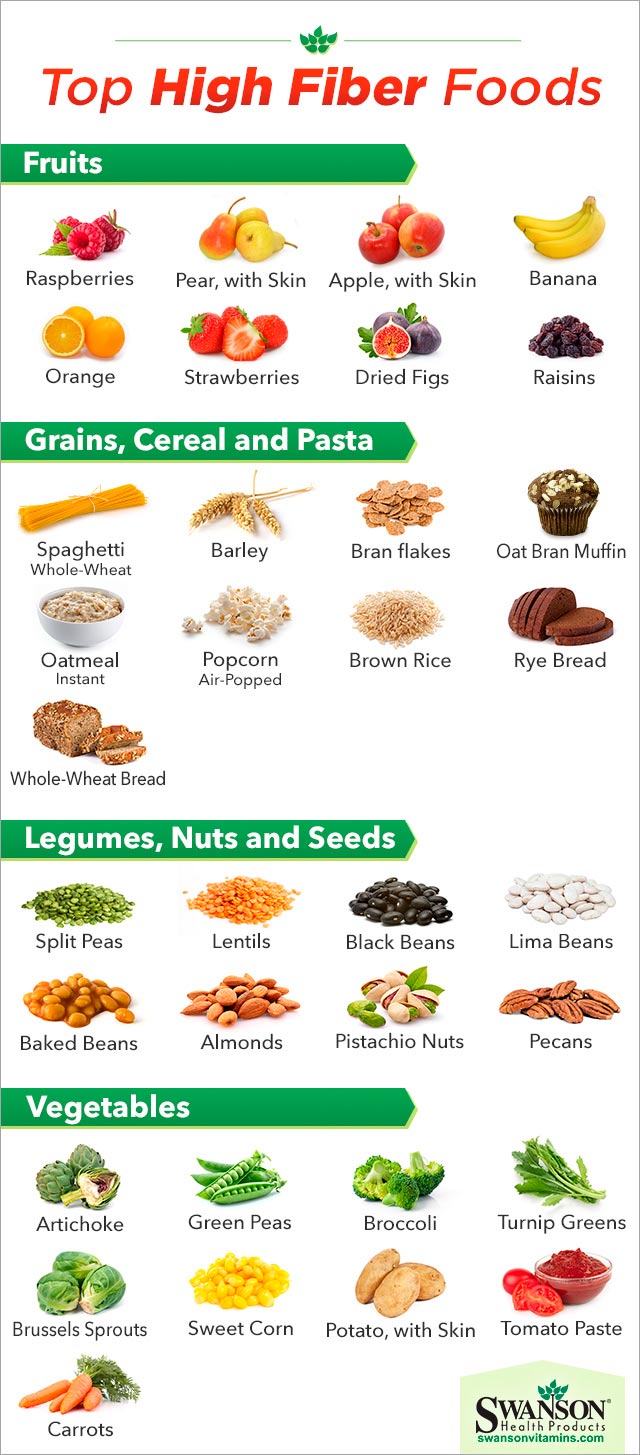
Incorporating High Fiber Foods into Your Diet
Incorporating high fiber foods into your diet is a great way to improve your overall health and well-being. Fiber is an essential nutrient that helps to regulate digestion, lower cholesterol levels, and reduce the risk of chronic diseases such as heart disease, diabetes, and certain types of cancer.
Here are some tips for incorporating high fiber foods into your diet:
-
Start small: If you're not used to eating a lot of fiber, start by adding small amounts of high fiber foods to your diet each day. This will help your body adjust to the increased fiber intake and prevent digestive discomfort.
-
Choose whole grains: Whole grains are a great source of fiber and other important nutrients. Choose whole grain breads, cereals, pasta, and rice instead of their refined counterparts.
-
Eat plenty of fruits and vegetables: Fruits and vegetables are naturally high in fiber and other important nutrients. Aim to eat at least 5 servings of fruits and vegetables each day.
-
Snack on nuts and seeds: Nuts and seeds are a great source of fiber and healthy fats. Snack on almonds, walnuts, sunflower seeds, and pumpkin seeds for a quick and easy fiber boost.
-
Add beans and legumes to your diet: Beans and legumes are a great source of fiber, protein, and other important nutrients. Add chickpeas, lentils, black beans, and kidney beans to soups, salads, and stews for a hearty and nutritious meal.
By incorporating high fiber foods into your diet, you can improve your health and reduce your risk of chronic diseases. Remember to drink plenty of water to help your body process the increased fiber intake and consult with your doctor if you have any concerns about your dietary needs.
Conclusion
Incorporating high fiber foods into one's diet can have numerous health benefits. Not only can it improve digestion and prevent constipation, but it can also lower the risk of heart disease, stroke, and certain types of cancer.
By incorporating a variety of high fiber foods, individuals can ensure they are getting a range of nutrients and health benefits. Some of the top high fiber foods include fruits, vegetables, whole grains, beans, nuts, and seeds.
It is important to note that increasing fiber intake should be done gradually and with plenty of water to prevent digestive discomfort. It is also important to consult with a healthcare professional before making any significant changes to one's diet.
Overall, adding more high fiber foods to one's diet can be a simple and effective way to improve overall health and well-being.
Eat well, live better!
